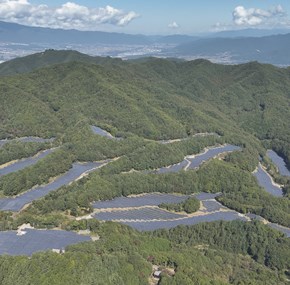Why solar energy is back from the dead in Spain
Optimism seems to have returned to the Spanish solar market after a lost decade of sluggish growth. Our expert offers her views on why solar energy looks poised to transform the Spanish energy system.
There are two telling figures that help outsiders get a sense of just how dramatically the solar market in Spain has been affected by government decisions since September 2008.
In 2008, a massive 2,718 MW of new solar capacity was installed. The following year it decreased to a measly 44 MW.
- With the solar energy sector roaring ahead globally, it is perhaps hard to imagine that Spain was once a leader in the European solar energy market. But the financial crisis and the subsequent government handling of this crisis slowed the Spanish solar market down to a standstill, explains Teresa Conde Muñoz, Transaction Specialist at Obton.
Spain has always been prime real estate for solar energy in Europe, with a yearly solar irradiance of 5 kWh per m2 in the southern part of the country. The Spanish government had successfully stimulated the solar energy market at the beginning of the new millennium – with attractive remuneration schemes for developers and investors. But with the financial crisis and an unexpected boom in installations, the Spanish government tried to rein in costs – ultimately deciding to retroactively cut subsidies.
All eyes on Spain
The government measures not only managed to rein in costs, but effectively put the Spanish renewable energy market into a coma – a coma that lasted from 2013 to 2016 and saw investors flee the country.
- The turning point in Spain came with the Paris agreement on climate change and its common EU commitment to reduce carbon emissions by 40% of 1990 levels before 2030, says Teresa Conde Muñoz.
The common EU commitment obliges member states to submit national action plans detailing how these states intend to meet the common goal. The draft plan that Spain submitted to the EU was surprisingly ambitious.
- Spain intends to increase its share of renewable energy from 17% in 2016 to 42% by 2030, which means that renewable energy production will have to increase by 74% as proposed in the draft plan, says Teresa Conde Muñoz. That means an increase in renewable installed capacity of 157 GW – of which wind energy accounts for 50 GW, with solar energy capacity increasing by 37 GW.
Investor concerns were gradually calmed in 2017, as the Spanish government announced two major renewable energy auctions. The two auctions awarded more than 8 GW of additional capacity to both solar and wind energy projects.
2019 looks to be a historic year for solar energy in Spain, and it is generally estimated that 2019 will see at least an incredible 4,000 MW of solar energy being installed.
Solar energy moving independently
However, the government’s renewable energy ambitions provide only half the explanation for the renewed optimism in Spain’s solar energy revival.
- In the past decade where the Spanish solar market practically stood still, the solar energy sector as a whole has moved forward at an impressive speed. Solar panel efficiency has increased dramatically while prices have steadily dropped, explains Teresa Conde Muñoz. The solar market today is therefore a lot less reliant on government subsidies.
- We are moving from a subsidized to a private market. Ten years ago, you needed government backing to stimulate investment, but today the Spanish power market is seeing a booming interest in power purchase agreements (PPAs). Especially popular are the PPAs where an end user or offtaker buys electricity at a fixed price directly from the energy generator over an extended period, says Teresa Conde Muñoz.
Clouds on the horizon
But Teresa Conde Muñoz warns that even though the solar market has matured significantly, government support is still essential if Spain is to deliver on its goals and potential.
- A transformation of the energy system on this scale requires adequate regulation and smooth, transparent processes for vetting new solar PV projects, she says.
- We have a massive pipeline of solar projects in Spain, and the authorities are struggling to process applications. For instance, the current regulations allow for developers to lodge grid access applications without even having secured land rights. This means that authorities are swamped in applications, further aggravating processing times, she adds.
The government’s proposed Climate Change and Energy Transition Law as well as other laws awaiting approval are set to change that, but with national elections looming there is still considerable uncertainty as to whether the new Spanish government will honor its predecessor’s commitments.
Professional players will prevail
In conclusion, the current Spanish solar market is characterized by optimism and anticipation as well as considerable uncertainty. Investors are spoiled for choice among numerous developers with projects of varying quality.
- As long-term investors in solar energy we are carefully scanning the market for the best opportunities. We are especially looking for professional and experienced developers who have a proven track record and the capacity to maintain good relations with local communities and authorities. In return, we offer developers financial security and the ability to act quickly when the project is sound, says Teresa Conde Muñoz.






